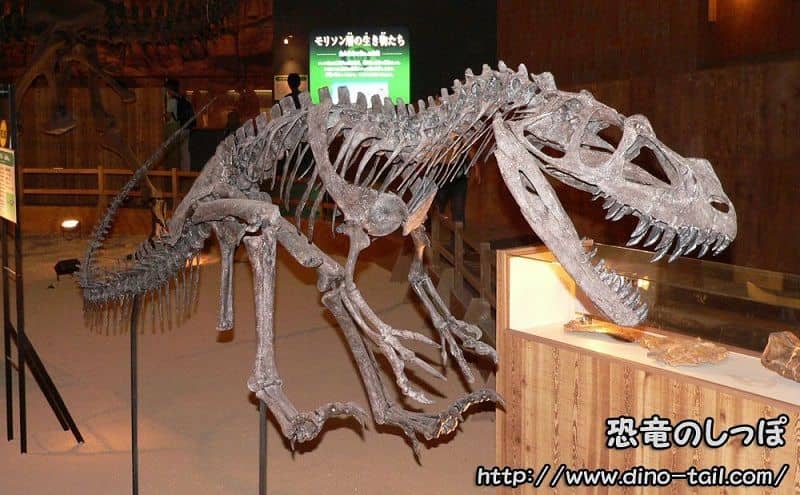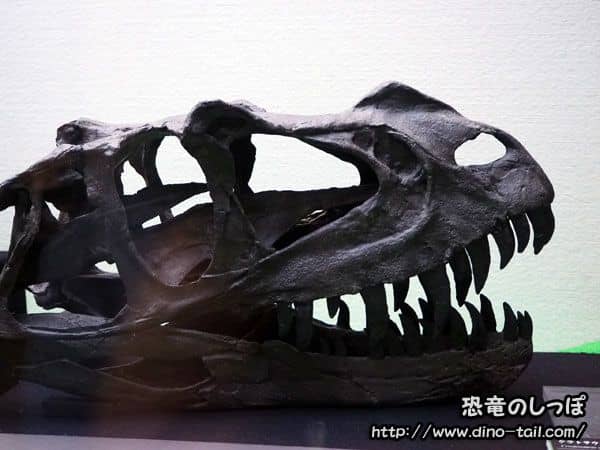About Ceratosaurus
| Scientific Name (Genus) | Ceratosaurus |
| Meaning of Name |
Horned lizard
kerato (horn) [Greek] - saurus (lizard) [Greek] |
| Classification | Saurischia, Theropoda (Ceratosauria) |
| Total Length | Approx. 4-6m |
| Diet | Carnivorous |
| Period | Late Jurassic |
| Species |
Ceratosaurus nasicornis
Ceratosaurus ingens Ceratosaurus dentisulcatus Ceratosaurus magnicornis |
| Year of Paper Publication | 1884 |
| Genus Name Publication | Marsh, Othniel Charles. (1884). Principal characters of American Jurassic dinosaurs, part VIII: The order Theropoda. American Journal of Science, 27. |
Characteristics
Although once considered the same species as Allosaurus, Ceratosaurus was established as a separate genus due to its distinct features.

It was a carnivorous dinosaur about 4.5 - 6m long.
Ceratosaurus is characterized by the short horns on its nose and above its eyes.

Ceratosaurus was smaller than its contemporary, Allosaurus. Its teeth were thin and excellent for slicing. Its short forelimbs had four sharp claws.
A row of small, irregular bony spines ran from its neck down its back. Theropods with osteoderms on their backs are rare (though common in ornithischians), a feature only confirmed in Ceratosaurus and its relatives.
The holotype skull was 55 cm long. The horn-like projection on its nose reached a length of 13 cm. This projection had many grooves, suggesting it was supplied with blood vessels in life. It might have changed color when the animal became aggressive or excited due to increased blood flow.
Paleontologist Robert Bakker, famous for the 'Dinosaur Renaissance' (the theory of warm-blooded dinosaurs), proposed that Ceratosaurus could swim. He suggested that its vertically deep and flexible tail could have provided propulsion in water. He based this on the discovery of numerous Ceratosaurus teeth in the same location as lungfish fossils.
However, no other evidence suggests Ceratosaurus was adapted for an aquatic lifestyle. This theory is controversial, and further discoveries and research are needed to draw a conclusion.

Coexistence and Hunting Strategy with Allosaurus

In Late Jurassic North America, where Ceratosaurus lived, the larger and more powerful predator Allosaurus also roamed. How these two coexisted is an interesting topic in paleontology.
Researchers believe they practiced 'niche partitioning'—avoiding competition by targeting different prey. While the large and robust Allosaurus specialized in hunting large prey like Stegosaurus and young sauropods, the smaller and more agile Ceratosaurus may have primarily hunted small ornithopods, as well as fish and crocodiles in rivers and lakes.
This theory connects to Robert Bakker's proposal that Ceratosaurus was an aquatic hunter. Its vertically broad and flexible tail, similar to a crocodile's, might have been useful for maneuvering in water. While Allosaurus was the king of the land, Ceratosaurus may have established its own domain as a ruler of the waterside.
Discovery and Publication

Source: Marsh, Othniel Charles. (1884). Principal characters of American Jurassic dinosaurs, part VIII: The order Theropoda. American Journal of Science, 27.
The first Ceratosaurus was discovered by a farmer. In 1883-1884, a nearly complete skeleton, including the skull, was found in the Morrison Formation north of Cañon City, Colorado (Allosaurus fossils were also excavated at the same site that year). Although the skeleton was well-preserved with some bones still articulated, the skull and spine were significantly distorted.
After excavation, it was studied by Othniel Charles Marsh, who described Ceratosaurus nasicornis in 1884.
In an 1892 paper, Marsh estimated its total length at 6.7m, but in 1920, Charles Gilmore of the U.S. National Museum suggested it was around 4.5-6m.

In 1976, a nearly complete skull (specimen MWC 1) was found near Fruita, Colorado. In 1992, the front half of a skull, an articulated pelvis, and a sacrum (specimen BYUVP 12893) were discovered in Moore, Utah. In 1999, the skeleton of a subadult (juvenile) was found. In 2000 and 2006, the discovery of Ceratosaurus fossils was also reported from the Lourinhã Formation in Portugal. In 2006, Portuguese paleontologist Octávio Mateus suggested that Portugal and North America were temporarily connected by land during the Late Jurassic (some researchers dispute this view of a temporary connection, as there are clear differences in sauropods and turtles between Late Jurassic North America and Portugal).
